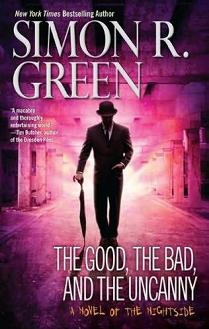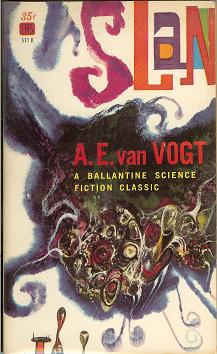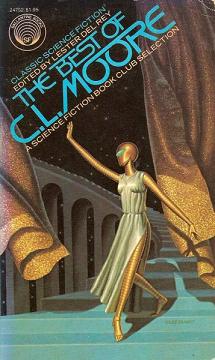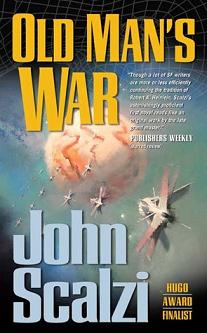
The Good, the Bad, and the Uncanny
Simon R. Green
275 pages
published in 2010
Simon R. Green is, in the best possible meaning of the word, a cheerful hack writer. He’s been writing professionally since the mid seventies and specialises in long series of easily digestable, fun adventure science fiction and fantasy, in commercially interesting subgenres. The Good, the Bad, and the Uncanny is a good example of this, the tenth novel in the Nightside series of urban fantasy. Which I didn’t know when I got it from the library, or I probably would’ve left it on the shelves. In the event it turned out not to matter fortunately; you needn’t have read the previous novels to understand this one, even if there are a lot of references to earlier adventures. It reminded me of when I first started to read Marvel comics way back in the eighties, trying to figure out a complex backstory that’s only hinted at.
The Nightside is the hidden part of London, where it’s always three a.m., magic is real, but so is super technology, demons and angels and nightmares cloaked in flesh roam the streets, time travel of one sort or another and all other sorts of crazy shit is commonplace. This is the world John Taylor works in, a private investigator in a pristine white suit, not quite a knight in shining armour but the closest equivalent. He’s cursed with awesome, having a magical gift that can get him out of trouble but which costs him to use it, not to mention can be a beacon to his enemies. He has powerful friends, but equally powerful enemies and the difference between the two is not always clear. The job he gets at the beginning of The Good, the Bad, and the Uncanny is simple but dangerous: escort a envoy from one side in the Elven civil war through the Nightside on his way to the court of the other side. There’s only one small problem, which is that Walker, the most powerful man in the Nightside, the one appointed by the Authorities to keep some sort of order, doesn’t want this envoy to reach his destination, as the civil war suits The Authorities fine…


